DMNS from Stapleton Front Porch on Vimeo.
The new Morgridge Family Exploration Center is set to open on Valentine’s Day, Feb. 14, which is fitting, because the 126,000-sq.-ft. addition has been a labor of love for Denver Museum of Nature and Science staff who first conceived the idea in 2005. With five levels, the addition offers new opportunities for school groups, families, exhibits and storage of ancient valuables.
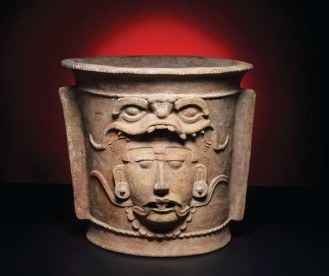
Incensario, or urn, featured in the “Maya: Hidden Worlds Revealed” exhibit opening February 14. Photo courtesy of DMNS.
Made possible by bond money and donations, including an $8-million donation from the Morgridge Family Foundation, the Morgridge Family Exploration Center at the south end of the museum is accessible from inside or via a new exterior entrance specifically for school groups. Inside, a multi-story atrium with micro-tile digital image board will be the site of daily Science on the Fly programs that will take full advantage of the two-story vertical space. The museum will organize parades that start in the main museum to lead visitors to the new wing, where they will be entertained by museum performers and educators. “There’s content about the physics of flight, but it’s also just a fun experience for people to be a part of,” explains Liz Davis, adult and children’s program manager.
Three Exploration Studios on the main level offer programming areas for school field trips and museum visitors. Two of the studios can be made into a single large one by raising a massive divider with SMART Boards for use by teachers and students. Each studio opens onto an outdoor nature plaza that is an extension of the learning areas. “We wanted to have the ability for our educators to talk about something and then go out into the park and do experiments and get messy,” says Davis.
The second floor of the center has a fourth Exploration Studio dedicated to early childhood education and a new, larger Discovery Zone, relocating from its current location in the museum. Children will explore a life-size climbable dinosaur, a paleontology dig site, water play area, construction zone, a multipurpose science and art lab, a clubhouse-themed interactive performance area and Big Backyard where Project Manager Peggy Day says, “kids can see what it’s like to be a ladybug and look up and see the big leaves.”
The third floor of the new Exploration Center holds the Anschutz Gallery, which can house a temporary exhibit on its own, or be joined with the existing Phipps Special Exhibits Gallery for a total of 20,000 square feet for larger exhibitions. “With the Body Worlds and Titanic exhibitions, there were some artifacts that were not able to go into the exhibits because of the limited space we had,” says Day. “So this really gives us the opportunity to hold much bigger exhibitions or two smaller exhibitions simultaneously.”
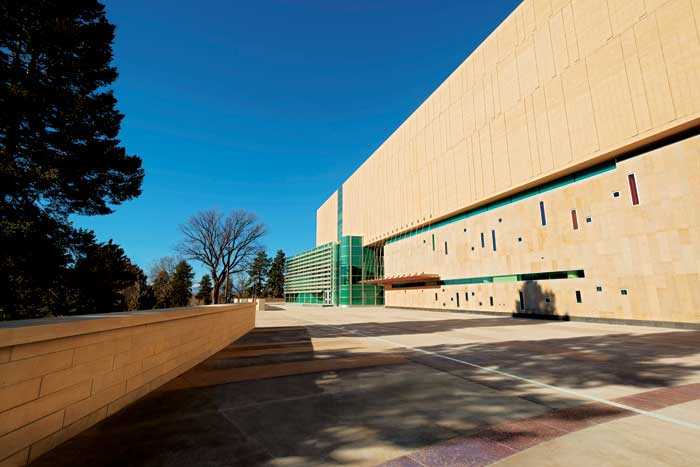
The southern entrance to the new Morgridge Family Exploration Center.
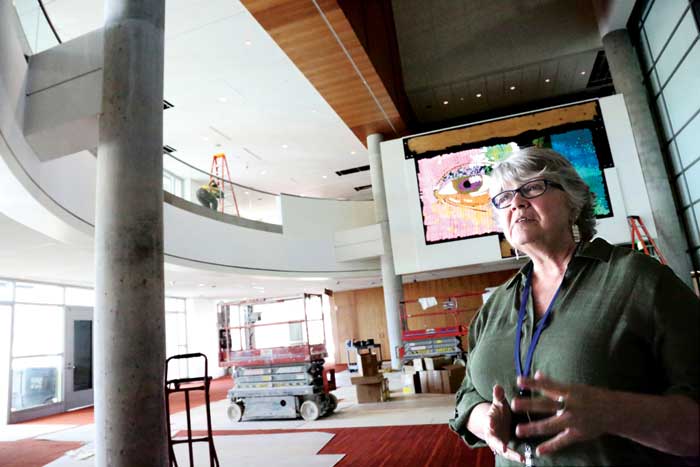
Project Manager Peggy Day stands in the multi-story atrium. A micro-tile digital image display is visible on the wall behind her. The second floor will be used for student learning.
The first exhibit to utilize the joint space will be “Maya: Hidden Worlds Revealed,” the largest exhibition about the ancient Maya civilization ever displayed in the U.S., which also opens on Feb. 14, in conjunction with the opening of the center.
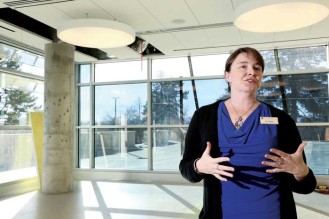
Liz Davis, adult and children’s program manager, explains the museum’s energy-saving features.
The two underground floors of the addition are devoted to the Rocky Mountain Science Collections Center—62,000 square feet of state-of-the-art consolidated storage space for the museum’s nearly 1.5 million precious artifacts and specimens, gathered over the museum’s 113-year history. Currently, the items are stored in more than 49 places throughout the museum. The transition of all of the artifacts will happen over the course of two years to allow for cataloguing and careful moving during nonpublic hours.
Sustainability is also an important aspect of the new addition. The goal is to have the new wing be LEED Platinum certified by the U.S. Green Building Council, the highest rating possible for new construction. Green features include using heat pump technology and recycled water from Denver Water to reduce energy consumption by up to 60 percent; automated louvers on south-facing exterior glass that move with the angle of the sun; and special glass that darkens and lightens depending on light levels outside to save energy.
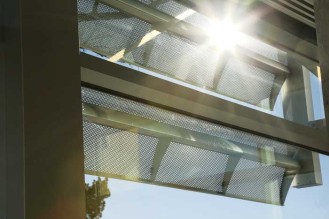
The new DMNS wing has many energy-saving features, including automated louvers that move with the angle of the sun. Glass darkens and lightens depending on light levels.
As the construction and planning processes draw to a close, the museum staff envisions all of the ways the new wing will be used. “We are so excited to develop new programs for a full range of audiences, from school groups, to members, to the general public,” says Davis. “Part of the fun and excitement has been planning programs for a space we’ve never been in so it will make it all the more exciting for when we can actually have people in there.”




0 Comments